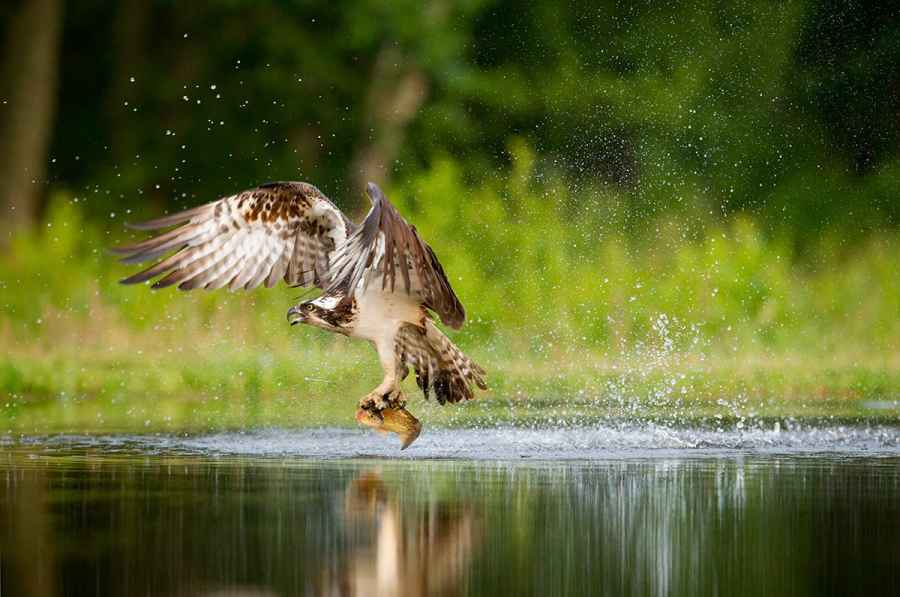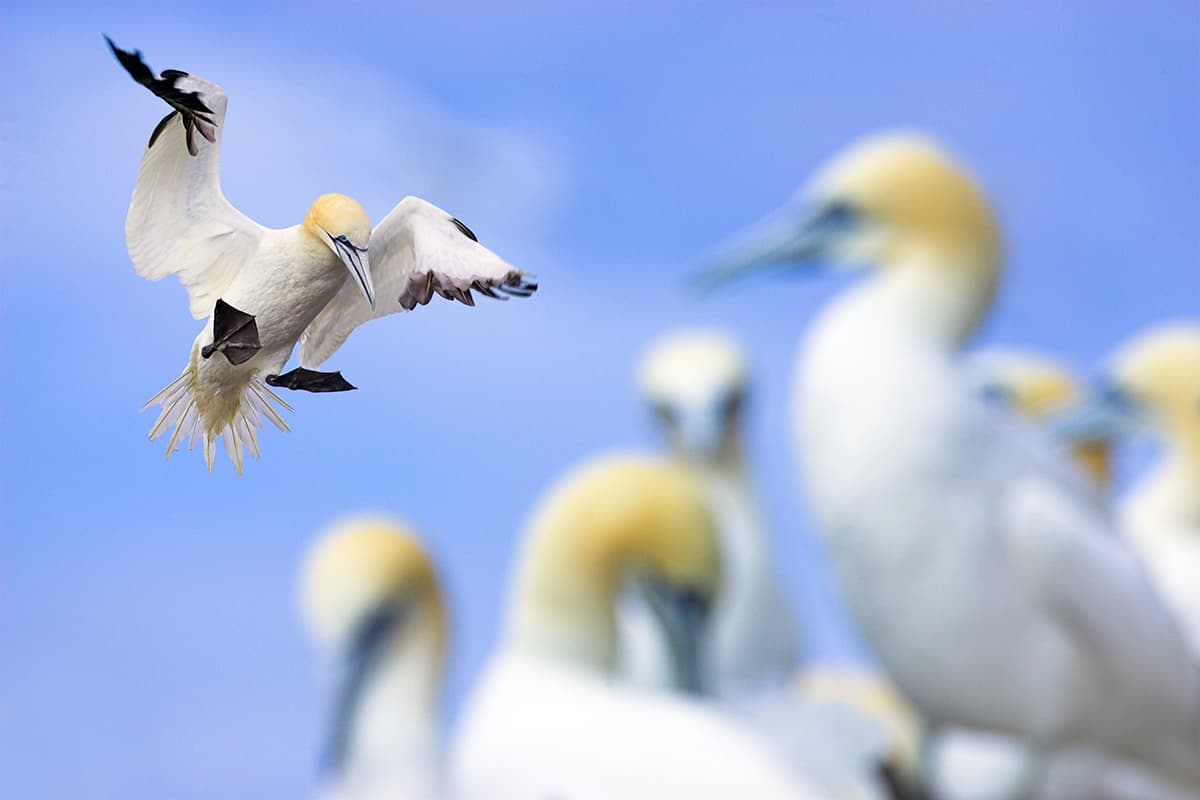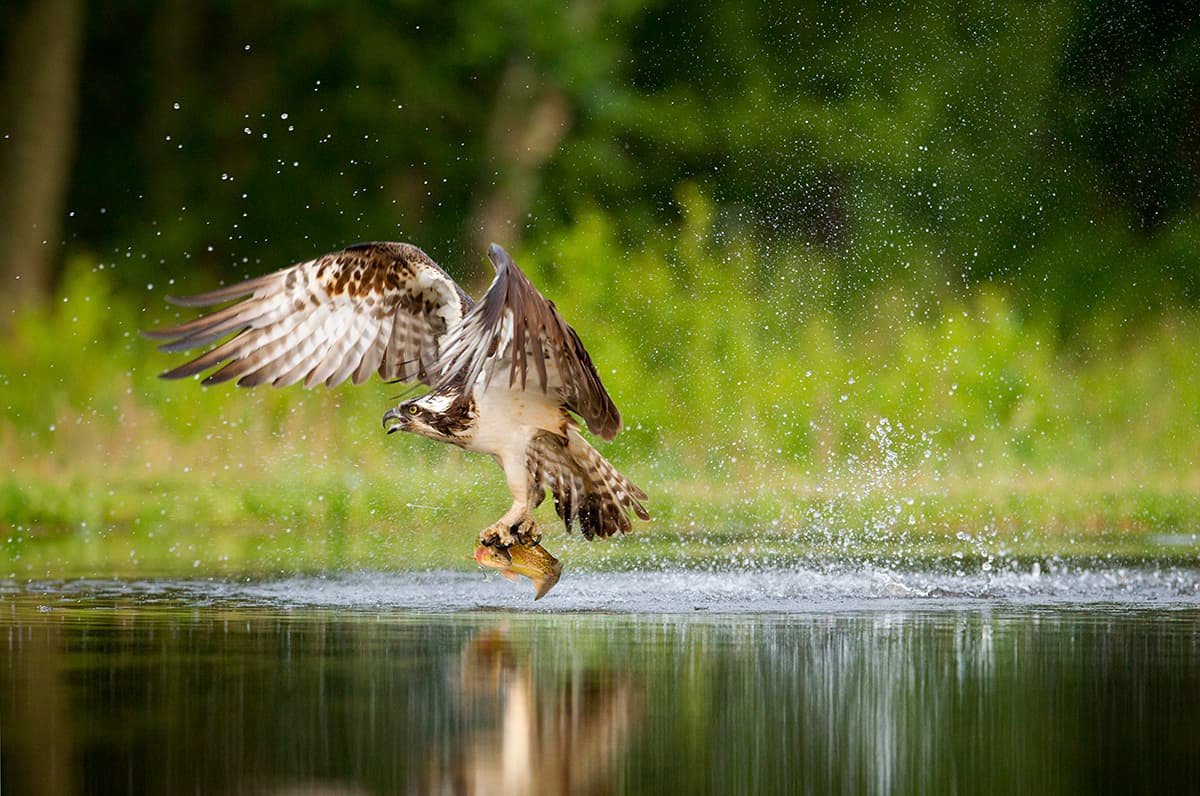
The graceful shape and form of birds appear at their most spectacular when they are in full flight. Their movements can be fast and unpredictable, so it comes as no surprise that for most people, the ability to capture the beauty of flight is regarded as one of the prime benchmarks in wildlife photography. Thankfully, recent advances in technology such as faster and more accurate focusing systems have made the task easier, but to obtain a successful result still requires plentiful use of the skills of old – patience and perseverance!
When it comes to choosing the right gear, fast lenses with wide apertures are the most suitable, as they tend to focus more quickly, and the greater light transmission allows faster shutter speeds. This is important if the objective of the photograph is to freeze the movements of a bird. Depending on the distance from the subject, focal lengths ranging from 200mm to 500mm are ideal. For flight photography I prefer prime lenses such as the 300mm f/2.8, as the autofocusing is precise and quick to react. When it comes to zoom lenses, the 70-200mm f/2.8 is also a good choice, provided your subject is within range. When using lenses of up to 400mm focal length, I find it easier to handhold as this allows a greater freedom of movement and makes fine-tuning the composition easier. As a general rule, I like to keep the shutter speed to a minimum of 1/800sec for a slow to medium-speed bird. For smaller, faster flying birds, shutter speeds of 1/1,000sec and above will usually be needed to ensure a pin-sharp result.
Panning and focusing
Regardless of the particular bird, effectively capturing a moving subject will require a solid panning technique. The keys to successful panning are smoothness and anticipation. To adopt the correct stance, stand with your feet shoulder-width apart with your elbows tucked in to your side for added stability. As you follow the bird, swivel the upper half of your body in one smooth motion. I prefer to keep my camera set to its high-speed drive mode and fire a rapid sequence of frames. For this reason, cameras with a fast frame rate are much more suited to flight photography, but that doesn’t mean you cannot still get excellent results from a slower camera with the correct technique.
When setting the focus, switch to predictive mode. This will allow the lens to constantly re-adjust and track your subject as your finger is held down. Under these circumstances, the most challenging part for the photographer is to keep the focusing point on the bird as you pan.
I prefer to expand the camera’s focusing area so that I have nine active autofocus points showing in the viewfinder. The centre point is the primary focus point, with the surrounding points acting as helpers. This gives me a greater focusing area and makes it easier to hold it on the flying bird, thus preventing the autofocus from jumping to the background. In this mode, the centre point is the most accurate so I would recommend starting with this, but as you grow more proficient try moving this to one side for a more effective in-camera composition.
Adding some negative space in front of the bird nearly always results in a more effective composition, as you are allowing space within the frame into which the subject is moving. The major exception to this rule occurs when the bird is flying directly towards the camera. In this case, a central composition will better highlight the symmetrical nature of the image.
Playing with light

Light will, as always, play a crucial role in your success. When the sun is low in the sky, it can light up the underside of the bird, which tends to reveal important feather detail. Getting the right exposure, though, can be tricky when your subject is flying against the sky. You will likely need to dial in a good amount of positive exposure compensation. Typically, I start at +2 stops and then check the histogram. For the best-quality image possible, ensure that the histogram is pushed as far to the right as possible without clipping the highlights, so you are recording the maximum amount of detail, and your files will be larger as a result.
Don’t be afraid to shoot towards the sun. Backlighting can infuse your images with an extra sense of beauty and drama, and create a wonderful effect. Shooting against the sun must be done early or late in the day, when the sun is close to the horizon, and if done correctly, it can yield truly spectacular results. In this situation, always watch carefully for rim lighting. This occurs when the sun is directly behind the subject. A halo of light will surround the bird, accentuating its shape and form. This often coincides with the light burning through the wing and tail feathers, highlighting the true beauty of a bird in flight.
Ben’s top tips
1. Switch your camera to predictive focus

For Canon users this is AI servo, while for Nikon it is AF-C. When depressing the shutter button, hold it down and the lens will constantly re-adjust its focus, keeping the subject sharp. You will need to pan carefully and accurately to keep the focus points on the bird, as these areas will really make or break an image.
2. Expand your focusing area

By expanding the active focusing area in your viewfinder, you are giving yourself a larger margin of error. It will be much easier for you to keep a larger area on the bird and the autofocus is less likely to switch to the background, which could lead to a frustratingly missed opportunity.
3. Keep a close eye on exposure

If a large proportion of the frame is taken up by light tones such as the sky, you will need to dial in some positive exposure compensation. As a general rule, when shooting against the sky, start at +2 stops and check the histogram. By exposing towards the right, you are retaining maximum detail which will ultimately result in a larger file size and a higher-quality image.
Why it works
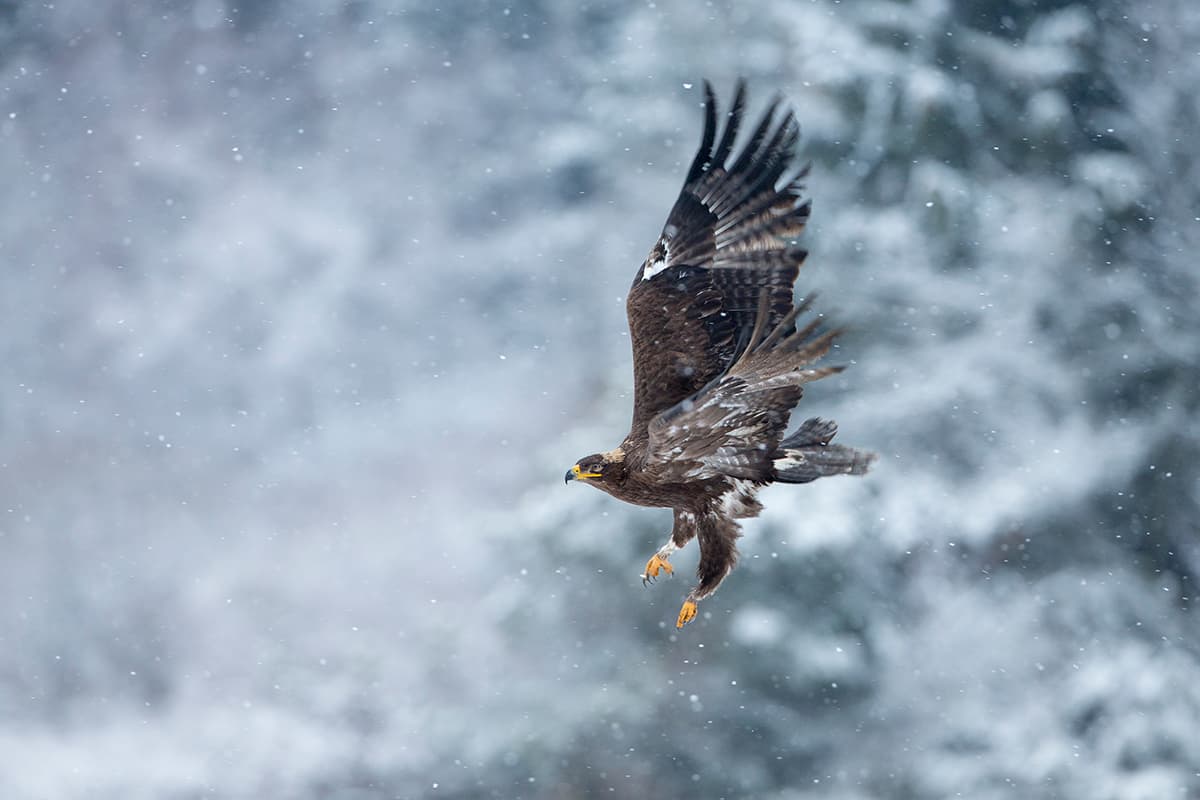
This image encompasses several techniques and shows why they can all lead to a successful image. The shutter speed used, while fast enough to freeze the bird itself, still allows a degree of motion in the wing tips to add a dynamic feel. The bird is moving into available space in the frame, creating a balanced composition, while the falling snow gives an idea of the bird’s habitat.
Alternatives
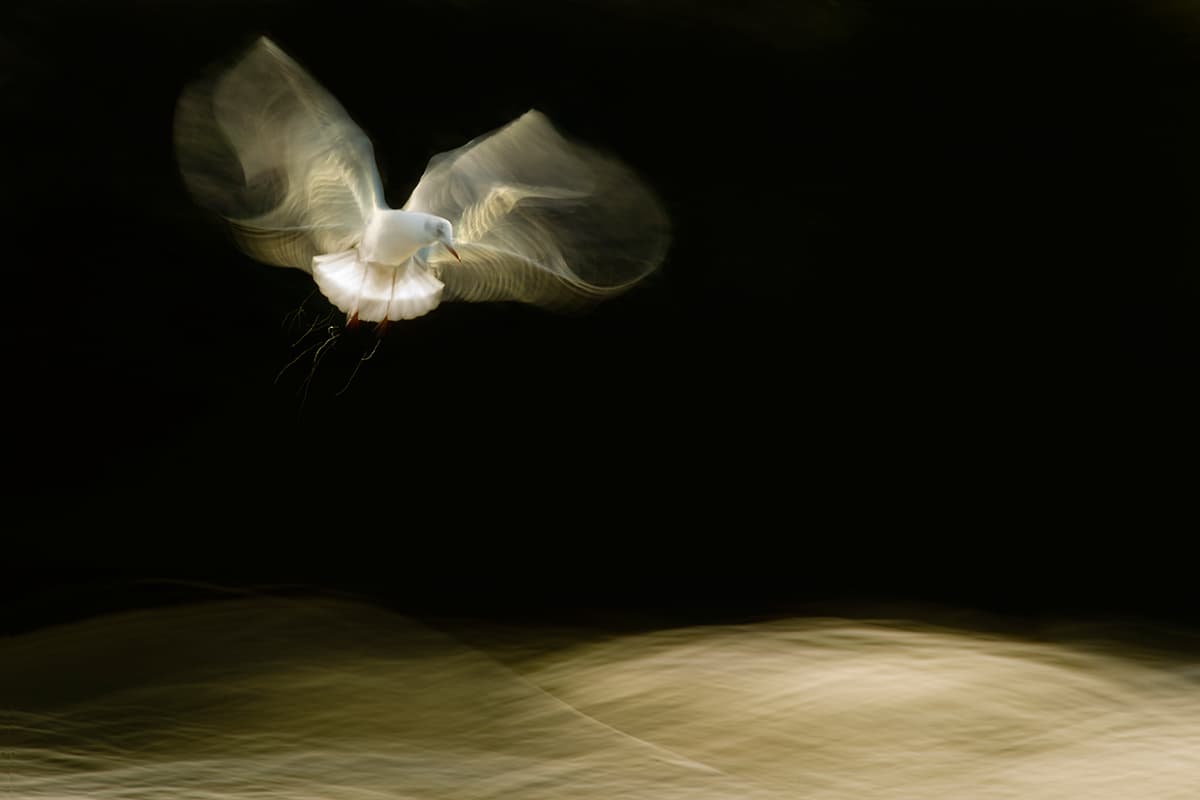
Rather than always trying to freeze the movement of your subject, try experimenting occasionally with slow shutter speeds to create a motion-blur effect, particularly in low-light situations. For this technique, switch to shutter priority mode and try out a variety of exposures. I find between 1/15sec and 1/60sec works well, but it all depends on the speed of your chosen subject. The key is to experiment as much as possible – and take plenty of shots! When done well, the effects of a slow exposure can result in an artistic impression of your subject, even bordering on abstract. Colour is important for this style of image; backlighting can create a beautiful golden glow and give your shots extra impact.
Kit list
Gimbal tripod head
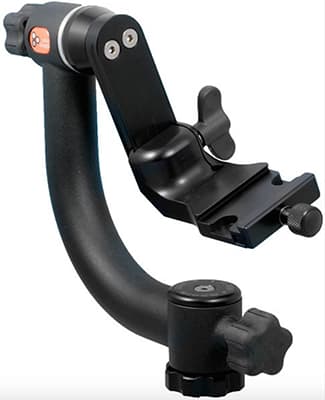
For lenses of 500mm upwards, a gimbal tripod head is an essential piece of kit. It will allow precise and fluid panning in any direction while taking all the weight (and much of the shake) out of the lens. There are cheaper alternatives available, but the Wimberley brand is favoured by most professionals. While not cheap, the build quality is fantastic and it should last a lifetime.
A fast lens

If you are serious about flight photography – or anything action-based, for that matter – lenses that open up to an aperture of f/4 or larger are worth the investment. They tend to focus faster, and by allowing more light into the lens, shutter speeds can be increased, thereby providing a greater success rate.

